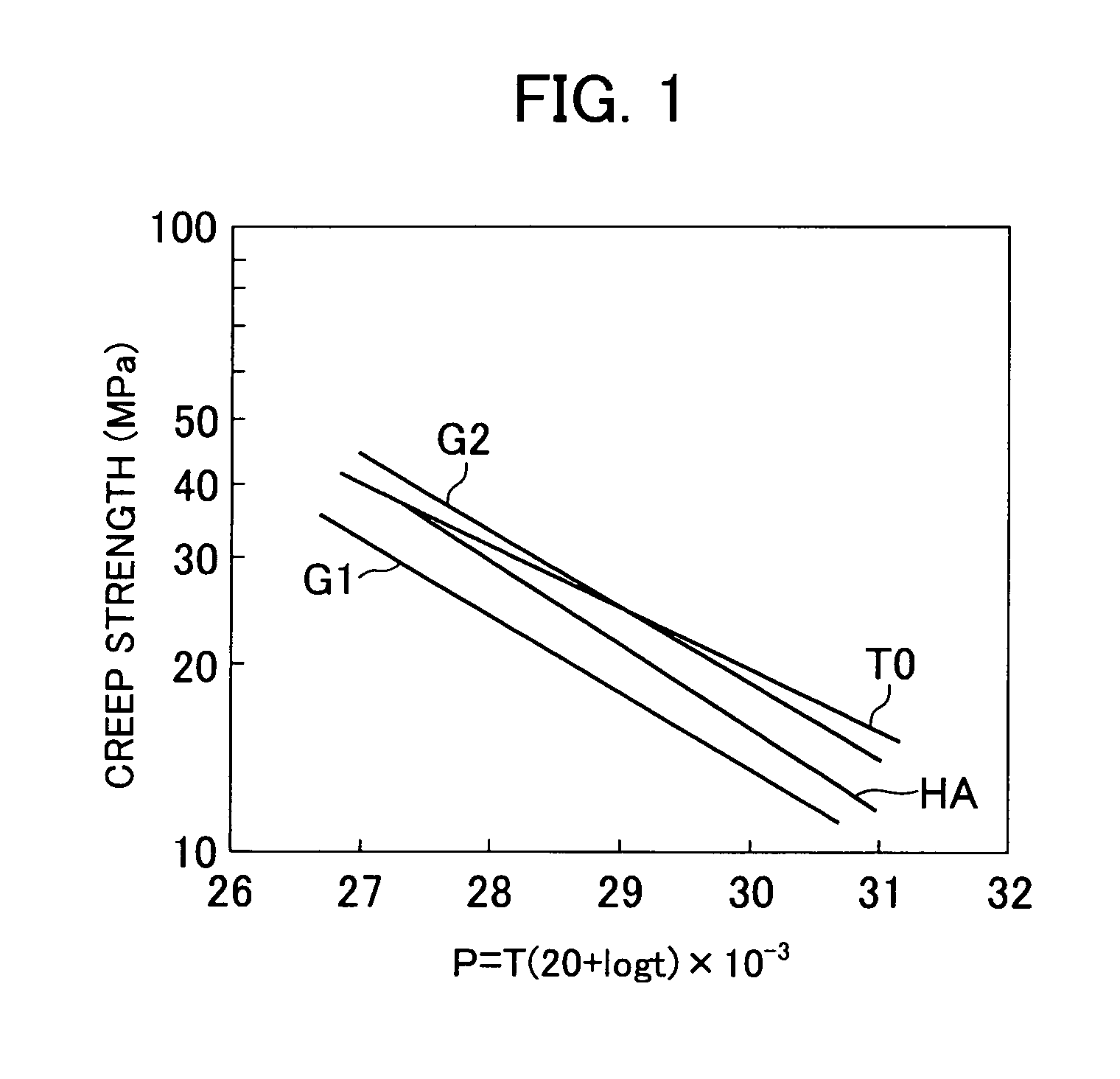Ni-based alloy member, method of producing the alloy member, turbine engine part, welding material, and method of producing the welding material
a technology of alloy members and turbine engines, which is applied in the direction of arc welding apparatus, wind turbine rotor blades with perpendicular air flow, wind turbines with parallel air flow, etc., can solve the problems of high-temperature welding metal strength lower than that of precision casting materials, parts of gas turbine rotor blades that need repair, and high melting point of alloy members. , to achieve the effect of narrowing the temperature range of solid solution treatment, lowering the melting point, and
- Summary
- Abstract
- Description
- Claims
- Application Information
AI Technical Summary
Benefits of technology
Problems solved by technology
Method used
Image
Examples
example 1
[0050]Table 1, given below, lists chemical compositions (weight %) of samples. The samples were each prepared as a welding wire with a diameter of about 2 mm through the steps of vacuum smelting, hot forging, and cold drawing. The oxygen content of the welding wire was 5-15 ppm. By employing the welding wire as a welding material, a buildup welded layer was formed on a rotor blade material by the TIG welding process. The rotor blade material was a unidirectionally-solidified columnar Ni-based alloy that contained, by weight, 13.5% of Al, 9.0% of Co, 16.0% of Cr, 1.7% of Mo, 1.4% of Ta, 2.0% of W, 0.10% of C, 0.012% of B, 3.5% of Ti, and 1.0% of Nb. The welding was performed in the lengthwise direction of the columnar crystal. To avoid welding cracks, a welded portion was heated to about 800-950° C. by high frequency heating. Also, to suppress mixing of oxygen into the welded portion during the welding, the welding operation was performed in an enclosed vessel. An atmosphere in the e...
example 2
[0058]In this Example 2, rotor blades in the initial stage used in two plants (A and B) were repaired by welding.
[0059]FIG. 6 is a perspective view showing the case where a corner at a tip of the rotor blade actually used in a gas turbine for power generation (plant A), which had been subjected to a relatively small amount of oxidation thinning, was repaired by using the material of the present invention. In the plant A, the operation had been shut down several times per year, and the rotor blade in the initial stage of the plant A was slightly damaged. In consideration of that a longer service life would be expected by using the welding material superior in the oxidation resistance rather than the fatigue strength in such a case, the material T0 of the invention containing no Ta was employed. With oxidation, a corner at a tip of an airfoil portion 8 was subjected to thinning. After cutting that corner by, e.g., grinding or electrical discharge machining, the blade was preheated to ...
PUM
| Property | Measurement | Unit |
|---|---|---|
| temperatures | aaaaa | aaaaa |
| diameter | aaaaa | aaaaa |
| temperature | aaaaa | aaaaa |
Abstract
Description
Claims
Application Information
 Login to View More
Login to View More - R&D
- Intellectual Property
- Life Sciences
- Materials
- Tech Scout
- Unparalleled Data Quality
- Higher Quality Content
- 60% Fewer Hallucinations
Browse by: Latest US Patents, China's latest patents, Technical Efficacy Thesaurus, Application Domain, Technology Topic, Popular Technical Reports.
© 2025 PatSnap. All rights reserved.Legal|Privacy policy|Modern Slavery Act Transparency Statement|Sitemap|About US| Contact US: help@patsnap.com



